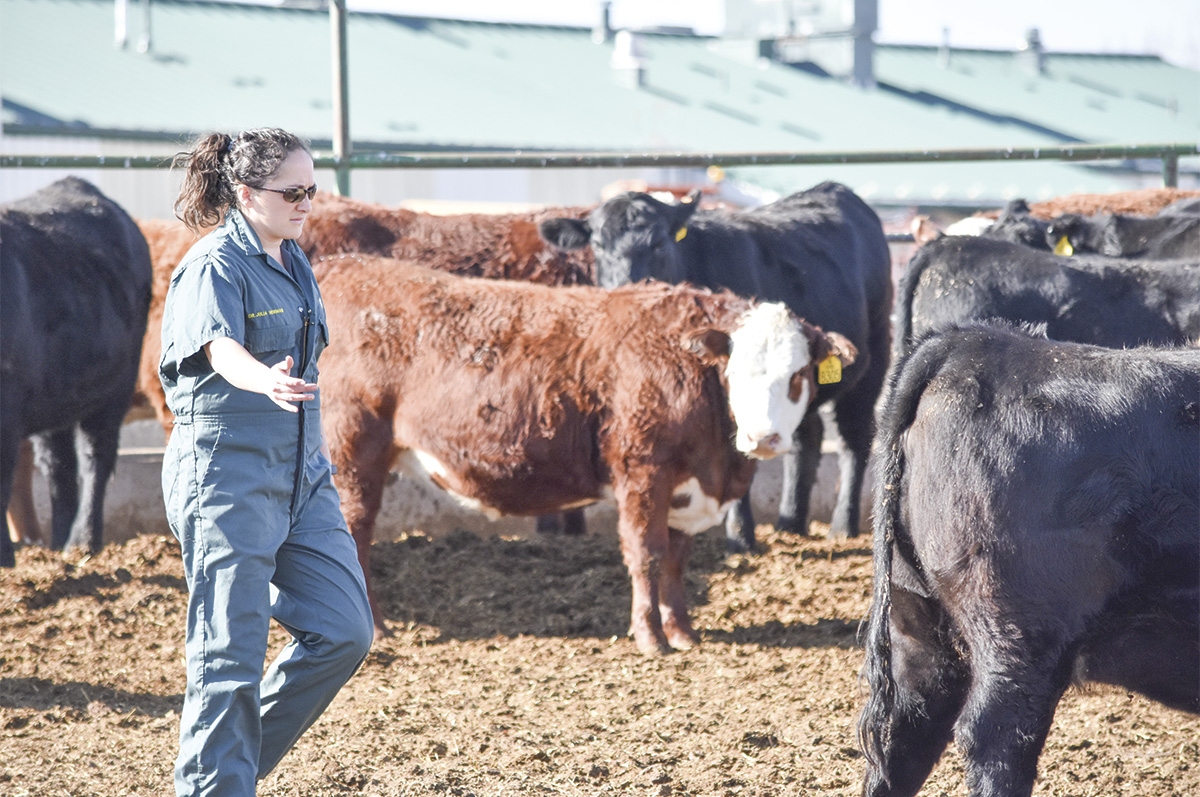When handling cattle, it is the duty of producers to ensure good handling and care for both cattle and handlers in a safe and efficient manner. When running cattle through chutes and corrals for vaccination and loadouts, it is important to make sure facilities and systems are working properly to avoid injury and unnecessary stress for the cattle and their handlers. Finding solutions to improve facilities and design elements can be beneficial to cattle handling and overall system flow.
Cattle-handling facility safety
“Part of good cattle handling is understanding the facilities that you have,” says Julia Herman, beef cattle specialist veterinarian at the National Cattlemen’s Beef Association (NCBA), a contractor to the beef checkoff. “Beef cattle operations are diverse in size and scale, as well as the people working,” says Herman. “There are many different facility types that can be successful depending on how you train your people and cattle handlers. Producers need to adjust their expectations and what they expect their cattle to do based on their facilities, while also considering temperament of the cattle and experience of the handlers.”
Herman recommends that producers who are going to work their cattle go through their system days in advance to evaluate the system before the cattle arrive. Walking through the system and looking for possible risks and injuries the equipment can pose to the cattle benefits both cattle and handlers. Ensure the whole system is checked, including the headgate, holding chute, working chute, crowding pen, holding pens, scales and loading chute. Producers can make sure all gates are functioning properly and not rusted shut, check if there are any sharp corners that would cause cattle to balk, and make sure flooring is nonslip and holes are fixed to prevent injury. It is also important to know who is working cattle that day so they know and understand how the facilities are working. Without this quick overview and training, it can turn into an unsafe situation.
“To prevent balking of cattle when working outside, it is important to know what time of day you will be working them,” explains Herman. “In the morning and afternoon hours, you may have stronger shadows, depending on where the sun is, but if it’s cloudy, that might help because you take a lot of the shadows out.” Cattle will balk at dark shadows or high-contrast objects on the ground, due to their depth perception. These are some things that can be easily fixed.
Chute and corral system functionality
Understanding natural cattle behavior is important to good stockmanship, which is a pillar of Beef Quality Assurance (BQA) training. BQA reminds us that cattle are herd animals and want to be with other cows. They rely on their senses to respond to the environment and pressure, including people. Because of this, building systems that allow cattle to see other cattle in front of them helps with animal movement within a system. “Cattle seeing other animals in front of them helps draw and bring positive flow as they are moving through the system,” Herman adds.

Julia Herman says recognizing where team members work best on processing day is an important thing to consider when preparing to process cattle. Photo provided by Julia Herman.
There are two designs that producers may be familiar with – tub systems with curved chutes, as designed by Temple Grandin, and the Bud box, which is rectangular and used as a flow-through leading to a chute, as developed by Bud Williams. Both systems take advantage of the animal’s natural behavior and allow the cattle to see other cattle in front of them. Either system can be designed with solid sides or open sides. What type of system a producer has may depend on how much space producers have. “When it comes to open and closed-sided, it depends on the system,” says Herman. “I’ve seen both open and solid-sided systems work really well, as long as people are trained on how to use them. It depends a lot on where people are positioned and where they are putting pressure on those cattle.”
Another tip when considering system functionality is ensuring the cattle can see an opening and keep flow. The alleyway leaving the chute, tub or box should be a straight angle to where cattle can easily see down the alley for two body lengths. Herman says the width of your system is important, whether you are running calves, stockers, cows or bulls through it. “Adjusting the width of the alley or chute to the normal standing width of the animal being processed is important,” she explains. “If the system is too narrow, then some of our really big cattle won’t want to walk through because it is unstable for them.”
Prep before you work
“Focusing on prep work to make sure your facilities are safe for the animals and the handlers can significantly improve how we handle the cattle on processing day,” Herman encourages. “Sometimes, we get wrapped up in the moment, where we feel like we just have to get this done as quickly as possible, but even just a couple hours of prep can help decrease the stress of handling and make processing go more efficiently.”
Recognizing where team members work best on processing day is another factor. Knowing what people want to do and letting people try different jobs can help improve the process. “We need to be cognizant about if cattle aren’t moving well or someone is tired and making poorer handling choices – we need to fix it right away instead of waiting until the end of the day,” explains Herman. “Knowing when we need to fix a flaw in the facility, give someone a break or move people to a new responsibility can improve overall morale. We all can find ways to improve our cattle handling and improve our handling systems.” Having open communication is important when working cattle and this includes having the entire team walk through the facilities and understand the job they are being asked to do. “Time and labor play a role in how cattle are handled. I think if we step back and take the time to be intentional about how we care for and handle our cattle, I think we can make it a positive experience for them and the handling team,” says Herman.
One intentional step is ensuring all team members are up to date on their BQA certification. The BQA program provides several resources for cattle producers and their teams to understand stockmanship and improve their operation through many preventive practices. These courses can also be used as onboarding or annual training for the team. Producers can check their certification or recertify at the BQA website.
With these tips in mind, how will you be implementing a facility walk-through the next time you work cattle?








